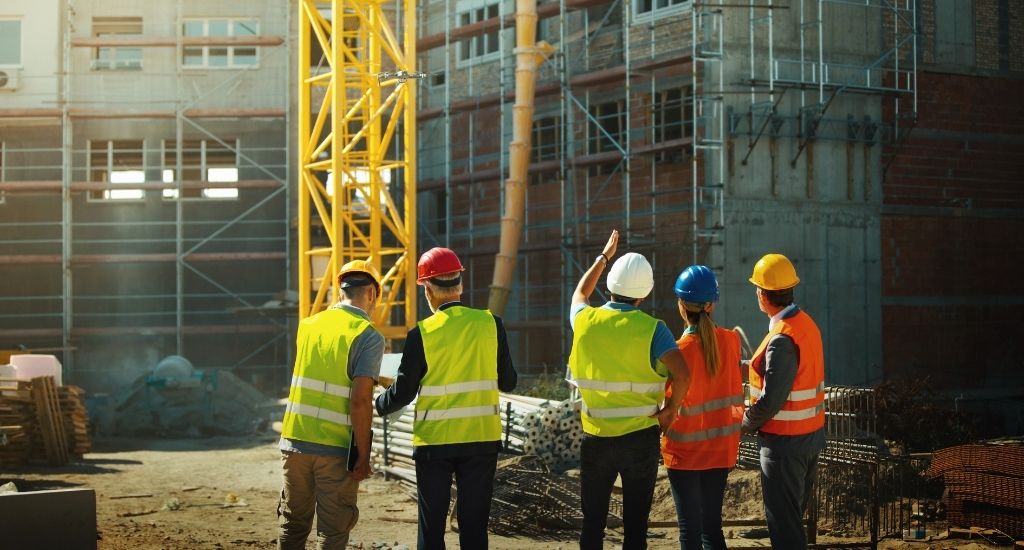Elevate Your Skills: General Construction Best Practices
In the dynamic landscape of building, the pursuit for quality in job implementation is perpetual. The journey in the direction of proficiency begins with a commitment to these basic pillars, each holding a crucial piece of the problem for crafting exceptional results in building and construction projects.
Security Procedures
In the world of general construction, carrying out extensive security actions is paramount to guarantee the wellness of all workers entailed in the building and construction process. Safety needs to always be a top priority on any construction site, despite the scale or complexity of the job. This includes conducting comprehensive risk evaluations, offering appropriate security training to all workers, and imposing stringent adherence to safety and security procedures in any way times.
One of the essential precaution in construction is the proper use of personal safety devices (PPE) This consists of products such as hard hats, gloves, safety and security goggles, and steel-toed boots, which are essential for protecting employees from possible dangers. Pittsburgh Contractors. Routine safety and security examinations need to likewise be carried out to identify and resolve any kind of prospective risks on the website immediately

Efficient Planning
Reliable preparation plays a critical function in the success of any kind of building and construction task, laying the structure for orderly execution and timely conclusion - Pittsburgh Contractors. The first stage of reliable planning involves establishing clear purposes, developing a sensible timeline, and creating a detailed spending plan. Task managers need to perform detailed site analyses, take into consideration prospective risks, and create contingency plans to minimize any type of unexpected challenges that might develop during the building and construction process
Furthermore, it is important to produce an extensive timetable that details each task, assigns duties, and establishes milestones to track development efficiently. Reliable communication amongst team participants and stakeholders is key to making certain that everyone is straightened with the job's objectives and timelines. Using electronic tools and software application can streamline the preparation procedure, enhance cooperation, and improve total project effectiveness. By spending time and resources right into reliable planning, building and construction projects are better placed for success, with minimized hold-ups and price overruns.
High Quality Control
Maintaining extensive quality control measures is extremely important in guaranteeing the architectural stability and safety and security standards of construction jobs. Quality control as a whole construction involves systematic evaluations, tests, and checks to guarantee that all materials, craftsmanship, and procedures satisfy the given needs and criteria. By applying a durable quality assurance system, construction specialists can identify problems at an early stage, correct problems quickly, and avoid expensive rework or delays.
One vital element of high quality control is conducting detailed evaluations at numerous stages of the building process. Inspectors should assess products for conformity with market standards, validate that building methods line up with best techniques, and make sure that all work meets the task specs. Furthermore, quality control actions usually include testing procedures to review the stamina, resilience, and safety of architectural components.
Regular communication and cooperation among task stakeholders, including engineers, engineers, service providers, and high quality control employees, are important for effective quality assurance application. By cultivating a culture of high quality awareness and attention to information, building and construction teams can maintain high criteria of craftsmanship and supply successful jobs that surpass or fulfill customer expectations.

Team Collaboration
Efficient partnership amongst building and construction staff member is essential to project success, cultivating seamless interaction and shared responsibility in achieving usual goals. Group partnership in construction entails different stakeholders, consisting of designers, designers, service providers, providers, and subcontractors, interacting cohesively throughout the task lifecycle. By promoting open interaction networks, establishing clear functions click resources and duties, and encouraging a society of common respect, building and construction teams can improve performance, reduce dangers, and make certain project turning points are fulfilled on time and within budget plan.
Routine group conferences, progress updates, and collective analytic sessions are vital parts of effective team partnership in building tasks. Encouraging active participation and valuing diverse point of views can bring about cutting-edge services and enhanced job end results. In addition, cultivating a supportive team environment where members feel equipped to share ideas and increase worries adds to a positive work society that inspires people to do at their finest.
Modern Technology Assimilation
Including innovative technical remedies right into building and construction processes has become increasingly vital for optimizing project efficiency and facilitating smooth cooperation among team members. Modern technology assimilation in building encompasses a variety of tools and software made to enhance various aspects of project management, style, and execution. Structure Information Modeling (BIM) software program, for instance, allows for the production of in-depth 3D designs that boost visualization, coordination, and decision-making throughout the task lifecycle. Job monitoring systems such as Procore or Autodesk BIM 360 enable real-time partnership, document sharing, and progression tracking amongst staff member, regardless of their physical area. Drones and laser scanning technologies help in website checking, progression monitoring, and top quality control, providing accurate data that boosts decision-making and decreases mistakes. Embracing cloud-based options for information storage and interaction even more boosts availability and details sharing among stakeholders. By leveraging these technical innovations, building specialists can considerably enhance task outcomes, lessen threats, and deliver jobs much more successfully.
Final Thought
Finally, the execution of thorough safety and security actions, reliable planning, top quality control, team collaboration, and innovation assimilation are essential elements of successful construction jobs. By click here to find out more prioritizing security, carrying out extensive danger assessments, and giving appropriate training, construction groups can guarantee a secure workplace. Reliable planning with clear objectives, sensible timelines, and comprehensive spending plans causes successful task results. Quality control procedures and team partnership foster an effective work setting, while technology assimilation enhances effectiveness and accuracy in building processes.
In the realm of general building, carrying out comprehensive safety procedures is extremely important to ensure the well-being of all personnel included in the building procedure.Preserving strenuous top quality control actions is paramount in ensuring the architectural integrity and safety standards of building jobs.Routine team meetings, progress updates, and collaborative problem-solving sessions are important elements of efficient team collaboration in construction projects. By leveraging like this these technological developments, building professionals can considerably improve project end results, decrease threats, and provide jobs much more efficiently.
In verdict, the execution of detailed safety and security procedures, effective planning, top quality control, group partnership, and technology assimilation are necessary elements of successful building and construction jobs.